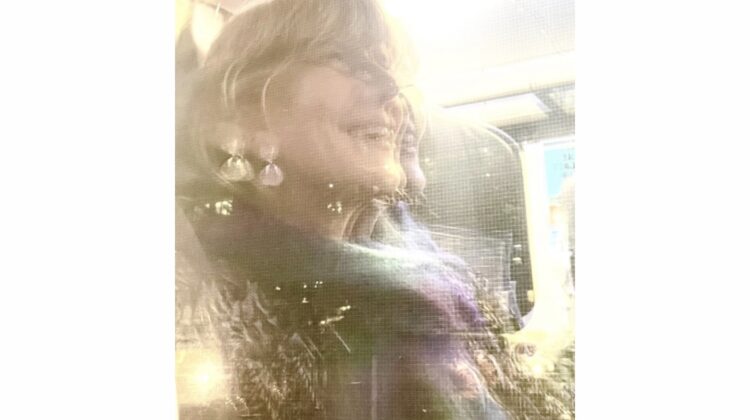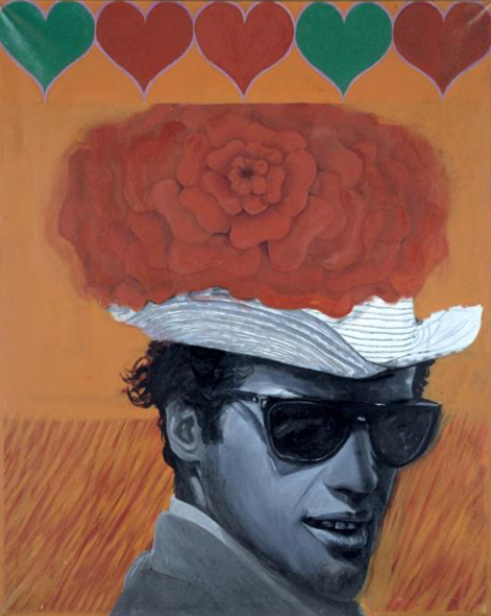
In this month’s column, Suffolk-based Artist, Educator and Presenter, Grace Adam looks at something that has not always been the done thing in art: smiling!
Smiling – it hasn’t always been the done thing. In Greek art, statues of people seem to gaze out benignly with archaic smiles, and a smile can occasionally be glimpsed on the lips of Roman emperors with terrifying CVs. The smile in art has been around, unsurprisingly, for a while, although difficult to pull off convincingly. Sculptures through the ages from Mesopotamia, Asia, Africa and Greece wear smiles. Ancient Greeks chiseled archaic smiles into sculpted heads. Those smiles may have been a marker of status, since aristocrats of multiple cities throughout Greece were referred to as the Geleontes or “smiling ones’.
Then it all changed – in Europe anyway. Christian artists of the Middle Ages rarely painted smiling humans. Smilers were undoubtedly sinners! Smiling, laughing faces conveyed low social standing or dodgy morality. Closed mouths lasted a long time. From the Middle Ages to the 18th century, broad smiles and laughing were considered vulgar.
In 1703, St. Jean-Baptiste De La Salle, the patron saint of teachers wrote: ‘There are some people who raise their upper lip so high…that their teeth are almost entirely visible. This is entirely contradictory to decorum, which forbids you to allow your teeth to be uncovered, since nature gave us lips to conceal them.’
Seventeenth century Dutch painters did challenge strict Calvinist dogma, giving us curled lips and flashes of teeth as they got to grips with everyday scenes of everyday people. Think Frans Hals, Judith Leyster.
Leonardo da Vinci’s Mona Lisa (1503–1506)

And so, we come to the famous one – yes, the Mona Lisa, quietly bucking the Renaissance trend for decent middle-class sitters to keep their mouths firmly and respectably shut.
Lisa del Giocondo, the wife of a wealthy Florentine merchant sits enigmatic, one hand resting elegantly on the other. Leonardo’s skilful use of sfumato (blurriness/ smokiness) means the face is modelled with subtlety and softness. Painted in oil on a poplar panel, she sits behind bullet proof glass in the Louvre watching 30,000 visitors a day eager for a glimpse of her.
Contributing to her lasting fame is primarily her smile, but also a theft, some films, some songs, Duchamp’s rude response, and the title of the painting itself – a play on her married name and ‘happy’. On a side note, she could have a doppelganger. There might exist a second earlier version of the painting. Art historians are still slogging it out trying to decide on the veracity of the earlier work. Is the smile less interesting if there is another one?
Pauline Boty’s With Love to John-Paul Belmondo (1962)

Eventually teeth, smiles and laugher became alright (in fact, pretty much required) for all snap shots. Smiles have crept back into paintings, but I don’t think there are enough of them – still.
You know Leonardo’s Mona Lisa, but you probably don’t know Pauline Boty’s With love to John Paul Belmondo. She is the British Pop artist you may never have heard of. A founder member, she shattered gender stereotypes and presented a real challenge to the boys’ club that was Pop Art. Here she flips the male gaze. Belmondo, the brooding star of French New Wave cinema, is painted in monochrome, looking over his shoulder; his mouth open and his teeth showing.
Goodness, whatever next?
Visit www.graceadam.com and The Art Channel (watch the latest review: Marina Abramović at the Royal Academy of Arts).









As usual, a very stimulating read
Very informative thank you !
Dear Grace, what fun we had to read this! Yes we need more SMILE in life as in art….. always a joy to read or listen to your lecture. Bea
Great article, I hadn’t thought about the lack of smiling in paintings, we definitely need more!
That‘s great Grace, thank you!
Food for thought! Do you have a range of facial expressions in art on the cards? Hope so…
Thank you!
Love this Grace—what a fabulous read! I learned a thing or two and found out about yet another wonderful woman painter/pop artist Pauline Boty! Thank you for sharing your smile with us, it always lightens the load…